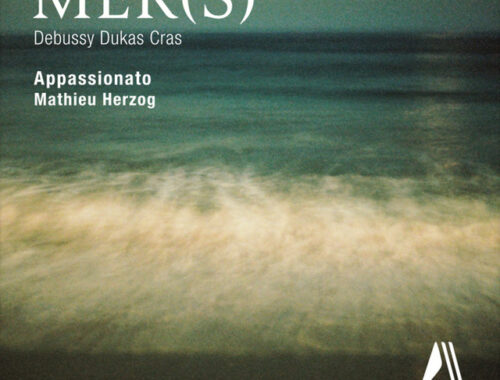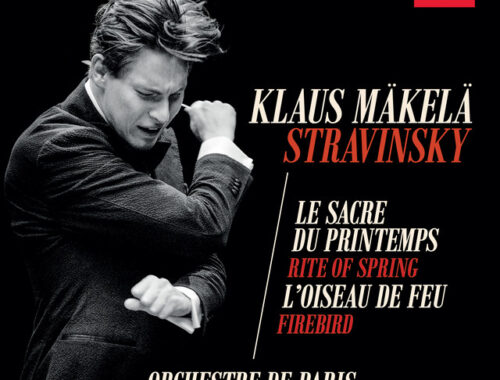GRAMOPHONE Review: Mahler Symphony No. 6 – Essen Philharmonic Orchestra/Netopil
 Here’s a Mahler 6 that comes with its own historical context. Unlikely as it may now seem, Essen was where Mahler first performed the harrowing Sixth in 1906 and the Essener Philharmoniker is the orchestra that can lay claim to having brought it into the world. It was at the dress rehearsal for that performance that Strauss (who had opened the orchestra’s new hall in 1904 with his Sinfonia Domestica) witnessed the effect that the piece had on its composer and somewhat tactlessly (by all accounts) made light of his (Mahler’s) distress. I personally think that it was almost certainly at this time that Mahler made the decision (reluctantly) to reverse the middle movements for subsequent performances and in doing so soften the incendiary juxtaposition of first movement and scherzo. In short, he lost his nerve.
Here’s a Mahler 6 that comes with its own historical context. Unlikely as it may now seem, Essen was where Mahler first performed the harrowing Sixth in 1906 and the Essener Philharmoniker is the orchestra that can lay claim to having brought it into the world. It was at the dress rehearsal for that performance that Strauss (who had opened the orchestra’s new hall in 1904 with his Sinfonia Domestica) witnessed the effect that the piece had on its composer and somewhat tactlessly (by all accounts) made light of his (Mahler’s) distress. I personally think that it was almost certainly at this time that Mahler made the decision (reluctantly) to reverse the middle movements for subsequent performances and in doing so soften the incendiary juxtaposition of first movement and scherzo. In short, he lost his nerve.
The Essen Philharmonic’s current principal conductor Tomas Netopil rightly adopts the original order for this recording (and we know for sure now that Mahler did revert to the original order before his death) but sad to say that in every other respect the weight of history has not been carried forward with this performance. One so often knows where a reading of this piece is going from the sound and spirit of the opening pages. Netopil sets off on a route-march to the abyss that is almost jaunty in its bright and open manner. It is possessed of quite the wrong kind of spring in its step, no weight or ‘drag’ to the rhythm, note values collectively clipped. It lacks ballast, fire, punch. Paradoxically the arrival of ‘Alma’s Theme’ conveys no uplift at all. It should sweep us off our feet, its intensity lifted in the reprise with pungent clarinets and descanting horns – both decidedly muted here. Indeed, the ‘recessed’ sound picture does little for the immediacy and impact of the piece – everything feels like it’s set back and blended. Brass and pugnacious woodwinds keep their distance.
Netopil and his players display a modicum of poetry in the central departure of this first movement but still it feels wishy-washy and without Mahlerian fibre. And there is an extended passage just prior to the coda where the reading gets so lachrymose as to lose all impetus.
Again, the soft-edged ‘blend’ is not what Mahler ordered for his trenchant, excoriating scherzo. This quite shocking juxtaposition, the plunge again into minor key remorselessness, needs to be shocking. I like Netopil’s way with the shy and awkward rubatos of the trios (I always recall Neville Cardus’ description of ‘a ländler danced by polar bears’) but again I crave ‘immediacy’ for Mahler’s spooky, scarifying ‘special effects’. Nothing should be at a safe distance.
The Andante (in its rightful place) now tenders it wondrous remoteness – fraught with heartache – but as we cross the threshold of the monstrous finale you need a Bernstein or a Tennstedt to signal just how unforgiving, just how much of an ordeal, the next 30 minutes are going to be. That isn’t the case here. Netopil and the Essen Philharmonic are not going to knock anybody’s socks off. The one thing that they and the engineers get absolutely right are the hammer blows. Just the sound – the crack of doom – that Mahler had in his mind’s ear.
But where is the first trumpet (indeed where are the other five!)? They should sear through the texture each time the hammer comes down while trombones and tubas weigh in. Given the size and dynamic potential of what is assembled there, the back of the orchestra barely gets a look in. And overall that all-enveloping blackness is nowhere – even the threnody of grief-laden trombones in the coda sounds almost casual, oddly prosaic.
Sorry – history trumps performance here. Reach for your Bernstein or Tennstedt.




